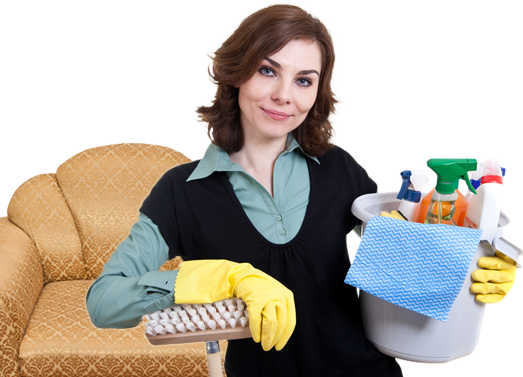Practical Approaches to a Dust and Allergen-Free Home
Posted on 14/06/2025
Practical Approaches to a Dust and Allergen-Free Home
Maintaining a dust and allergen-free home is a crucial aspect of modern living, especially for families affected by allergies, asthma, or respiratory issues. Dust mites, pollen, pet dander, mold, and various microscopic irritants can accumulate indoors, making your home an unsafe haven for sensitive individuals. However, with a combination of smart strategies, rigorous cleaning routines, and the right products, you can significantly minimize dust and allergens, creating a healthier, more comfortable living environment.
Understanding the Sources of Dust and Allergens
To successfully keep your home dust- and allergen-free, it's important to recognize where these irritants originate. Common sources include:
- Dead skin cells from humans and pets
- Outdoor particles, such as pollen or soil, brought in on shoes and clothing
- Pet dander, fur, and feathers
- Textiles, including carpets, curtains, and upholstery that trap dust
- Mold spores and mildew from humidity or water leaks
- Household consumables like paper fibers and lint
- Pest debris from insects like cockroaches and dust mites
By identifying and understanding the key contributors, you can take targeted action to reduce dust and allergen build-up.

Effective Cleaning Techniques for a Dust-Free Home
One of the most vital steps in controlling dust and allergens is maintaining a robust cleaning routine. Here are highly effective strategies:
1. Establish a Regular Cleaning Schedule
- Develop a weekly or bi-weekly cleaning routine to prevent dust accumulation.
- Assign specific days to tackle different rooms or activities, such as vacuuming, dusting, or laundering bedding.
2. Use Microfiber Cloths and Mops
- Unlike traditional dusters, microfiber cloths attract and trap dust instead of scattering it.
- Wash microfiber materials frequently to prevent re-depositing dust during cleaning.
3. Vacuum Regularly with a HEPA Filter
- Choose a vacuum cleaner equipped with a HEPA filter to capture even the smallest particles and allergens.
- Vacuum carpets, rugs, and upholstery at least once or twice a week, and increase frequency for high-traffic zones.
- Do not forget to vacuum under furniture and along baseboards, where dust collects unnoticed.
4. Wet-Dust Surfaces
- When you dust with a dry cloth, particles tend to become airborne; use a slightly damp microfiber cloth for best results.
- Pay special attention to shelves, electronics, baseboards, and ceiling fans.
5. Wash Bedding and Linens Frequently
- Dust mites thrive in bedding. Wash sheets, pillowcases, and duvets in hot water (at least 130?F/54?C) weekly.
- Regularly launder curtains, cushion covers, and other removable fabrics.
Preventative Measures: Stopping Dust and Allergens at the Source
Cleaning alone isn't enough; prevention is equally important to achieving a comprehensive dust-free home. Consider the following tactics:
1. Manage Indoor Humidity
- Dust mites and mold flourish in humid environments. Use a dehumidifier to keep relative humidity below 50%.
- Ventilate bathrooms and kitchens with exhaust fans to reduce moisture.
2. Invest in Air Purifiers
- A quality HEPA air purifier can significantly decrease airborne dust, pollen, and pet dander.
- Strategically place air purifiers in bedrooms, living rooms, and other high-traffic areas for optimal results.
3. Control Pet Dander and Fur
- Brush and bathe pets regularly to minimize shedding and dander spread.
- Keep pets off beds and upholstered furniture as much as possible.
- Use washable pet bedding and clean it frequently.
4. Adopt a "Shoes-Off" Policy
- Shoes track in dirt, pollen, and outside allergens. Create a designated shoe storage area near the entrance.
- Place doormats inside and outside each entryway to capture particles before they enter your home.
5. Declutter and Organize
- Clutter attracts and traps dust. Regularly sort and donate unused items.
- Use closed storage bins and cabinets to keep surfaces clear and reduce dust-prone areas.
Optimizing Your Home's Design for Allergen Control
Structural factors in your home directly impact dust retention and allergen build-up. Consider these proactive steps:
1. Choose Hard Flooring Over Carpets
- Hardwood, laminate, tile, or vinyl are much easier to keep dust-free than carpets, which trap debris deep within fibers.
- If you prefer rugs, select washable options and clean them frequently.
2. Replace Heavy Curtains with Blinds or Washable Fabrics
- Heavy drapes hold dust; opt for washable curtains or dust-resistant window treatments such as blinds or shutters.
- Clean window treatments regularly to prevent dust build-up.
3. Install High-Quality Air Filters in HVAC Systems
- Use fine or HEPA-grade filters, and replace them according to the manufacturer's recommendations -- usually every 1-3 months.
- Schedule annual duct cleaning to remove accumulated dust, mold, and allergens from central air systems.
4. Opt for Minimalist Decor
- Minimizing knick-knacks and soft furnishings can help reduce dust collection points.
- Display items in closed glass cabinets to limit dust exposure.
Tackling Hidden and Often-Neglected Dust Zones
Even the most thorough cleaning routines miss certain areas. Don't forget these common dust and allergen hotspots:
- Beneath and behind large appliances (fridges, stoves, washers)
- Ceiling fans and light fixtures
- Air vents and registers
- Baseboards and crown moldings
- Mattresses and box springs (invest in allergen-proof covers)
- Tops of doors, cabinets, and picture frames
- Electronics such as TVs, computers, and game consoles
Choosing and Using Low-Allergen Household Products
The products you use can either help or hinder your mission for a dust and allergen-free home:
1. Hypoallergenic Cleaning Agents
- Choose cleaning products labeled as hypoallergenic, fragrance-free, and dye-free to avoid irritation.
- Natural alternatives such as vinegar and baking soda are effective and less likely to trigger sensitivities.
2. Allergen-Proof Bedding
- Encasing pillows, mattresses, and box springs in allergy-proof covers can drastically reduce dust mite exposure.
- Replace old pillows every 6-18 months since they accumulate dust mites over time.
3. Washable Decor
- Choose washable slipcovers, curtains, and area rugs to minimize permanent dust build-up.
- Opt for hard-surfaced or easily-cleaned decorative objects.
Special Strategies for Sensitive Individuals
If you or someone in your home struggles with allergies or asthma, consider these extra measures for an allergy-friendly living space:
- Keep windows closed during high pollen seasons, and use air conditioning with top-quality filters.
- Shower and change clothes after spending time outdoors to prevent pollen transfer.
- Avoid strong fragrances from candles, air fresheners, or cleaning products which can trigger respiratory symptoms.
- Work with an allergist to identify specific triggers and tailor your prevention plan accordingly.
Seasonal Considerations and Maintenance
Recognizing the importance of seasonal adjustments is vital for year-long dust and allergen management:
- Spring and Summer: Focus on controlling pollen. Clean window sills and screens regularly, and change HVAC filters more often.
- Fall: Rake leaves promptly, as these can harbor mold spores and are easily tracked inside.
- Winter: Pay extra attention to indoor air quality, as windows are kept closed and dust can accumulate rapidly.

Long-Term Benefits of a Dust and Allergen-Free Home
- Improved respiratory and overall health for all occupants, especially those with allergies or asthma.
- Better sleep quality due to reduced nighttime irritants.
- Enhanced indoor air quality leading to more energy and comfort.
- Prolonged lifespan of household items as dust does not accelerate wear and tear.
Final Thoughts: Creating a Healthier, Dust-Free Home Environment
Achieving a dust and allergen-free home requires dedication and an integrated approach, but the rewards include comfort, better health, and peace of mind. Practical daily habits--paired with smart cleaning, preventative strategies, and targeted product use--can drastically reduce exposure to dust and allergens. By making dust-proofing and allergen control a household priority, you foster an environment where every family member can breathe easier and live better.
Commit to these practical strategies today, and transform your home into an allergy-friendly, dust-free sanctuary for years to come.




